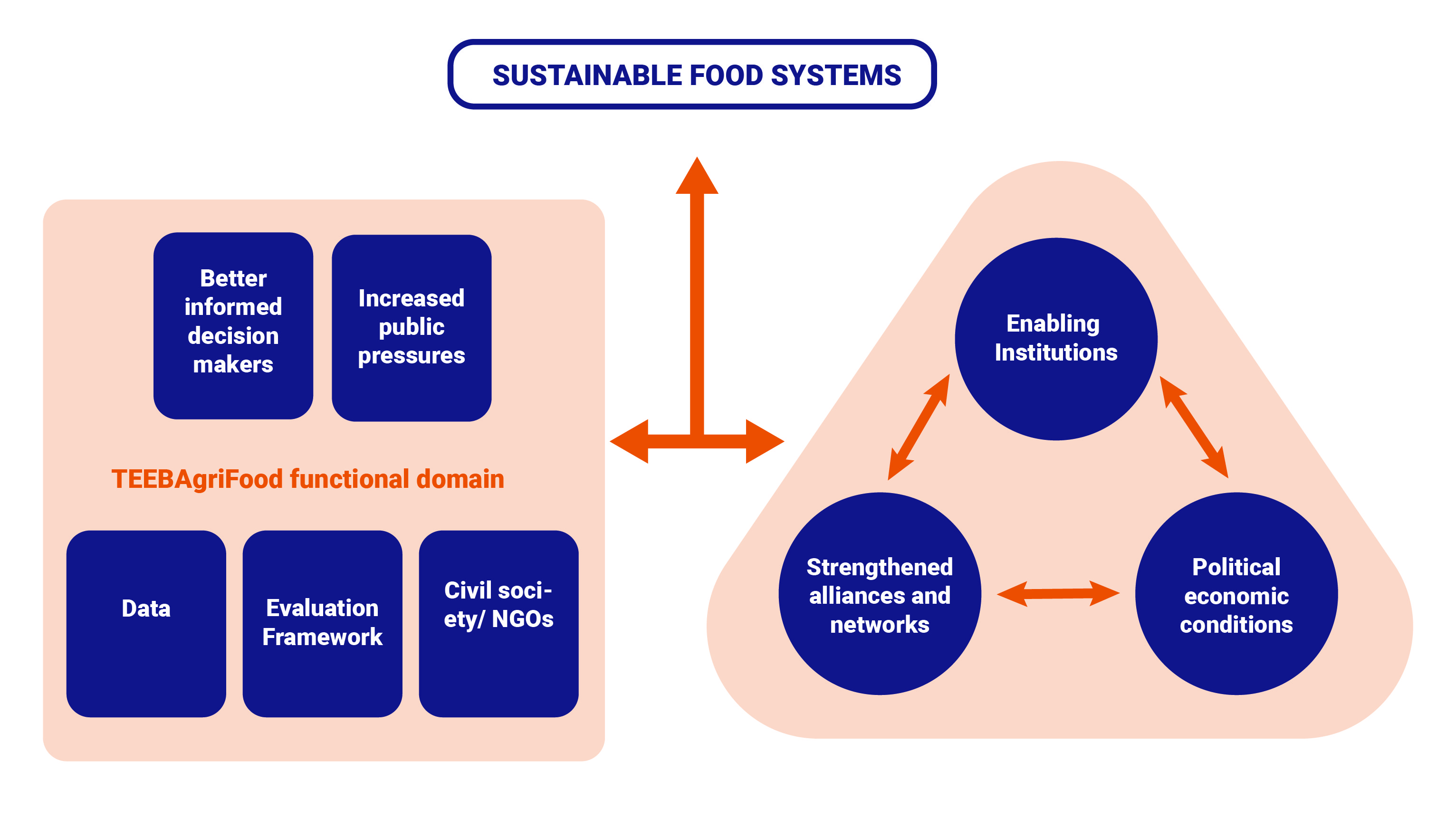

TEEBAgriFood’s Evaluation Framework answers the question: What should we evaluate about food systems? And TEEBAgriFood’s methodologies answer the question: How should we do these evaluations? TEEBAgriFood illustrates five families of applications to compare: (a) different policy scenarios; (b) different farming typologies; (c) different food and beverage products; (d) different diets/ food plates; and (e) adjusted versus conventional national or sectoral accounts.
TEEBAgriFood gives ten examples showing how to apply this framework and methodologies for various types of evaluations. One of them is, for example, a study in New Zealand of 15 conventional and 14 organic fields that valued 12 ecosystem services and found both crops as well as other ecosystem services to be higher in the organic fields.
The TEEBAgriFood evaluation framework provides a structure and an overview of what should be included in the analysis. However, methods of valuation depend on the values to be assessed, availability of data, and the purpose of the analysis. Ideally one should be able to say with some confidence what are the externalities associated with each euro or dollar spent on a given kind of food, produced, distributed and disposed of in a given way. The application of the framework requires an interdisciplinary approach, where all relevant stakeholders, including policy-makers, businesses, and citizens, understand and identify questions that are to be answered by a valuation exercise. Therefore, stakeholder engagement across sectors is critical to the effective application of TEEBAgriFood in specific contexts and policy arenas.